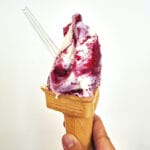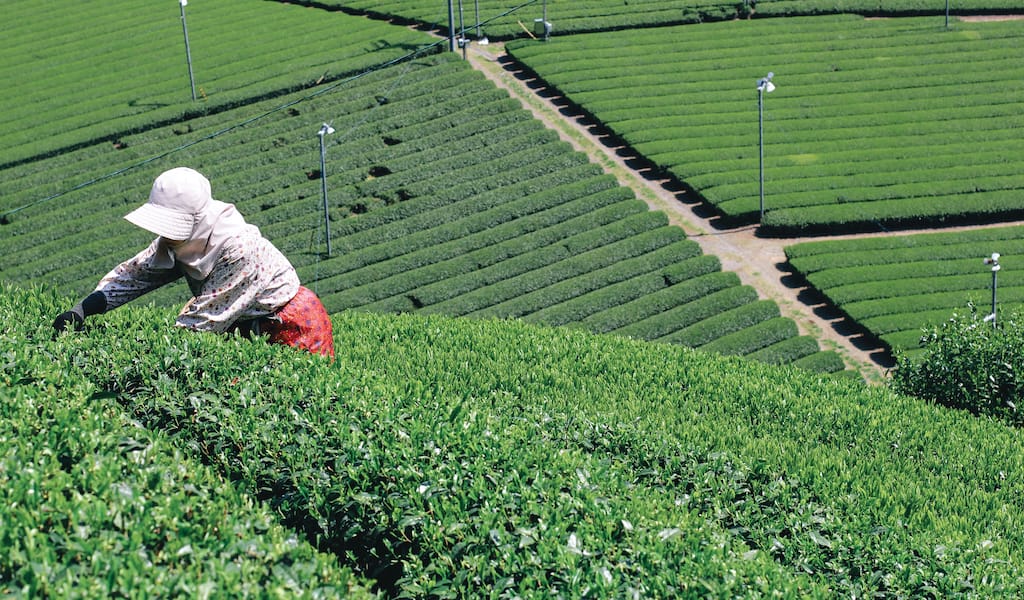Amanda Tong’s hands are grey with liquid porcelain as she slowly shapes a small pitcher on her potter’s wheel. Marbled clay rises and flattens under her strong hands, larger than you’d expect from her slight stature. Behind her, Jun Matsumura scrapes tendrils of clay off a partially-dried vessel, sharpening its elegant curves. Cantonese pop music plays from speakers on the shelves. Both of them are quiet, focused entirely on their work.
On a sunny spring afternoon, ceramicists Amanda and Jun agreed to let us watch them work at their studio in rural Saitama, about an hour outside of central Tokyo. We’re here to chat about their ceramics practice; specifically, what goes into making utensils and vessels for the Japanese tearoom.*
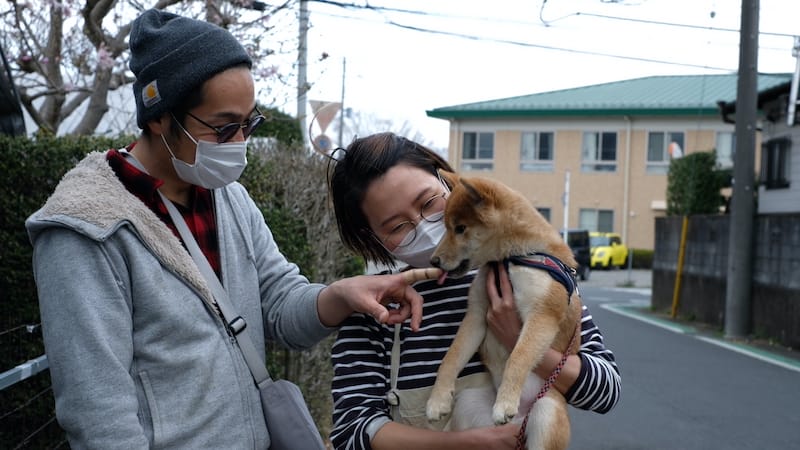
Born in Hong Kong and formally trained as a ceramicist in London, Amanda arrived in Japan in early 2020 to visit her partner Jun. The two had met in 2018 at a workshop in Hong Kong, and continued to stay in touch over the years. She’d arrived just before the pandemic shut all borders, leaving her stranded in Japan. Far away from her friends, family and studio space in Hong Kong, she hunkered down with Jun – whose family home is a minute’s walk from their studio – and recreated her ceramics practice from scratch.
Both of them work with porcelain, but in almost diametrically opposed styles. Amanda’s black-and-white works, influenced by traditional Chinese medicine concepts – for example, yin and yang energy – have a serenity to them, their precise, crisp forms juxtaposed against marbled patterns. (An effect produced by the neriage technique, in which clays of different colors are laminated together before throwing them on the wheel.)
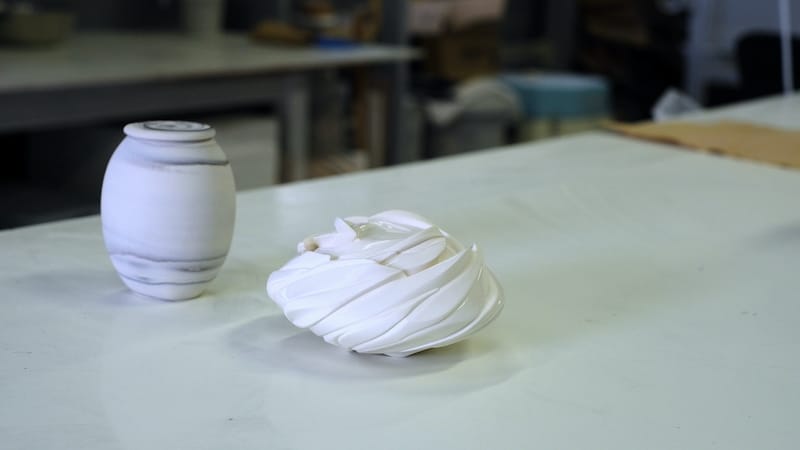
At first glance, Jun’s pieces are more like sculptures than functional ware – bold and bone-white shapes, curves and sharp points with an almost aerodynamic quality to them, rather like the skeletons of sea creatures. (Unsurprisingly, he’d studied marine biology in the US before turning to ceramics.) His chawan (tea bowls) seem like spaceships from a sci-fi story, a far cry from what most people would associate with the tea room. They’re beautiful and baffling until you pick them up and realize just how intuitively your hands cup themselves around the curves of the chawan.
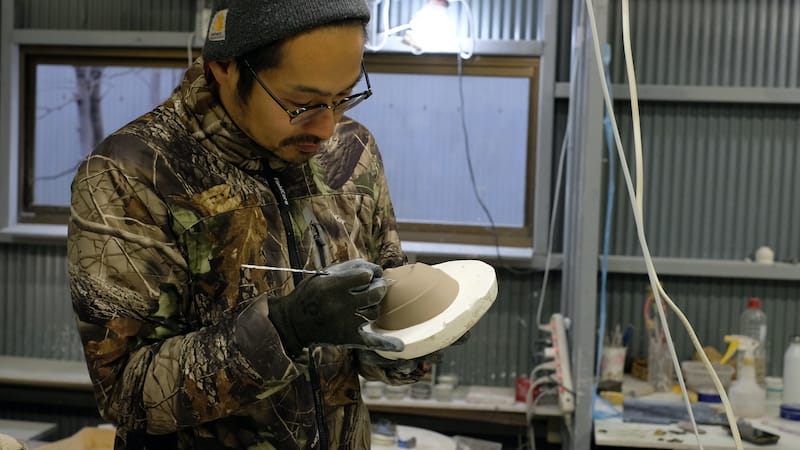
“I focus on how [people] use the bowl – where the hands are going, where they’re placed,” he says. “I want to focus on how they’re going to pick it up, and then exaggerate the shapes for how they might use it.”
Jun spent a few years working at a studio in Kanazawa after graduating from a ceramics school in Tajimi, which is one of Japan’s most famous cities for ceramics. Through tea events and demonstrations held at the studio every month, he picked up the basics of Japanese tea. The practice of tea is notoriously rigid, with many rules to remember and follow, but there are some you can break, he says. Indeed, seasoned tea practitioners are usually more open to new styles of doing things – they’re the ones who typically commission his work – and it’s often beginners and newer practitioners who tend to be inflexible on rules. He’s interested in stretching the limits and ideas of what tea utensils can be.
“I wanted to break the rules while following the rules,” says Jun.
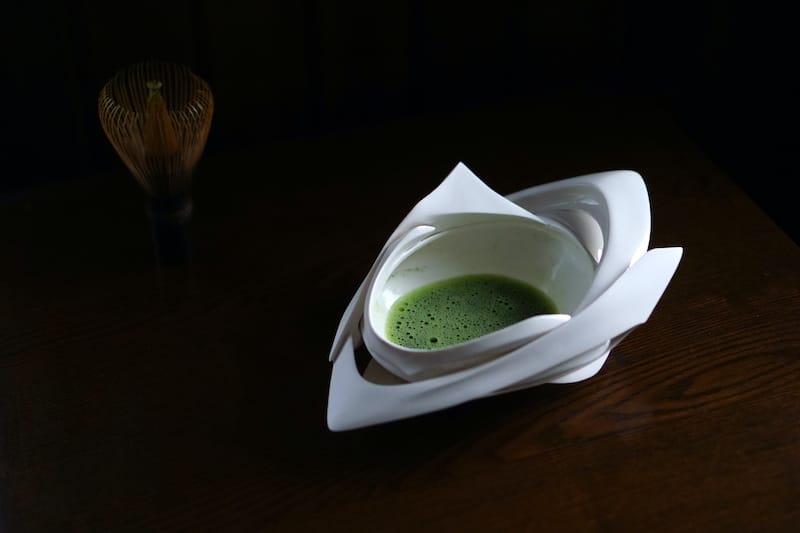
In contrast, Amanda’s recent forays into tea-related utensils hew more closely to traditional forms, as her chasen (tea whisk holder) and cha-ire (tea container) show. Her chawan also have the looser, handbuilt quality favored by tea practitioners, compared to her wheel-thrown works. For someone whose work is usually controlled and neat, handbuilding tea bowls was both liberating and fun.
“After throwing it, I just dropped [the tea bowl] while it was still wet and then shaped it by hand,” she says, as we chat after dinner at their favorite Chinese restaurant nearby. “Making tea ceremony items feels like a way of creating new opportunities, new ways of creating.”
According to Jun, her decision to drop the wheel-thrown bowls and let nature change their shape displays an intuitive understanding of Japanese tea culture, something called chami (茶味) or “the taste of tea.” Like the concept of wabi-sabi, it’s difficult to express in words, but it’s a little like an appreciation for letting go and seeing what happens.
She might never have begun making the bowls if it hadn’t been for a bespoke order from a Hong Kong-based client, which led to further orders after she shared the results on social media. To begin making them, she watched videos to learn more about tea and how things are used in the tearoom. (One eye-popping factoid she and Jun shared: the knots used to tie the shifuku (仕覆 ), the tea container pouch, are different before and after being used in the tearoom, a supposed throwback to 15th–16th samurai era practices to avoid poisonings and assassinations.) But being in Japan and seeing tea utensils in their environment also allowed her to appreciate them on a more intuitive level.
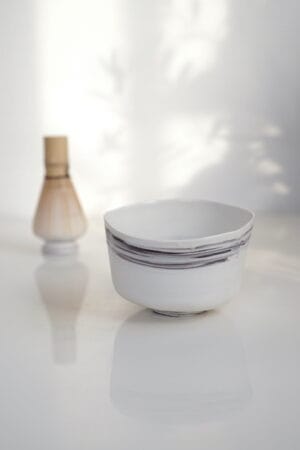
“Each step in the tea ceremony is super slow,” says Amanda. “To me, or maybe as someone coming from Hong Kong, it’s all about efficiency. Just do it, right? But of course there’s meaning [behind it], and that’s the part I’m slowly exploring in order to make good work.”
In a way, their works reflect their respective stages of their journey and relationship with Japanese tea. Amanda is conscious that she’s very much a beginner in tea: there’s a lot left to digest and explore, and from a cultural standpoint, she’s keen to respect the rules at this stage.
“A part of me is like: I come from the outside. I’m someone not from Japan, making something for this culture,” she explains. “I want local Japanese people to be able to use my things and feel comfortable using them.”
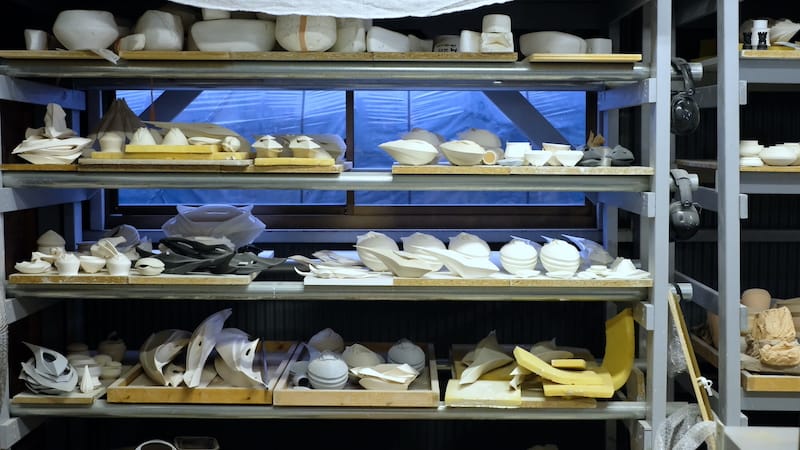
Jun, on the other hand, is more keen to push the envelope in what, to him, feels like a rather static culture. He observes that 15th century tea master Sen no Rikyu—whose teachings have been practiced for centuries at this point—favored rustic, humble wares at a time when tearooms were places to display one’s wealth, one among many reasons he was considered radical for his time. Although Sen no Rikyu changed the rules, says Jun, people just carried on traditions in his vein.
“I think it’s really important to preserve [tea ceremony] history, but at the same time, we should move this culture forward,” he says. “We could change or adapt things to our culture for this moment. We don’t need to keep sticking [to the same things] just because it has a huge history.”
We’re reminded of what a tea master once told us: everything in the tea room has some meaning to it, and if you don’t ask, you won’t find out. To watch Amanda and Jun work, and then discuss their work with them is to be afforded a rare glimpse into the care, thought and labour that goes into an artist’s craft. It feels like a gift. Although they’ve both been practicing artists for close to a decade, we get the sense that they have a long, bright career ahead of them, and we’re excited to see what they create next.
*The concept of “tea ceremony” doesn’t exist in Japanese; it was labelled as such by Westerners visiting Japan for the first time and witnessing what they perceived to be a “ritual.” It is known as sadō (茶道), the way of tea, or simply o-cha, tea.
To purchase one of Amanda’s pieces, check out her online shop. To purchase one of Jun’s pieces, DM him on Instagram to request a catalogue. (Support independent artists!)
Florentyna LeowFlorentyna Leow
Published on August 15, 2022
Related stories
June 6, 2022
Tokyo | By Florentyna Leow
TokyoAuthor Zach Mangan, founder of Kettl, a tea and teaware company based in New York City and Fukuoka, Japan, shares the stories of tea producers and craft of tea-making in his new book, Stories of Japanese Tea: The Regions, the Growers, and the Craft (Princeton Architectural Press, 2022). Originally a jazz drummer, Mangan first experienced…
August 1, 2023
Tokyo | By Florentyna Leow
TokyoOn a warm August morning two years ago in an orchard somewhere west of Aomori City in Japan’s Tōhoku region (about 4 hours from Tokyo by train), we watched blackcurrant farmer Kenji Hayashi scoop dark magenta gelato into paper cups. Ribena had nothing on this. It tasted like summer incarnate, an electric blackcurrant explosion tempered with…
April 19, 2023
Tokyo | By Florentyna Leow
TokyoIt snowed in Tokyo on March 22 – a wet, rain-like snow that puddled as soon as it touched the ground, but snow nonetheless. It was un-springlike as the week before was sunny. Early spring is sly and tricky here. One moment the kawazu-zakura have blanketed trees in pink popcorn blooms, the next moment it’s…















































